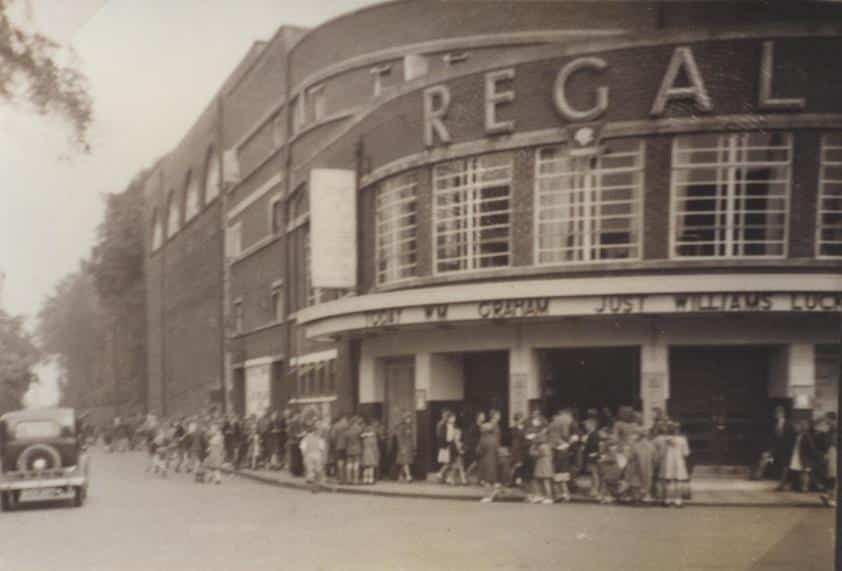With the outbreak of war in late 1939, attempts were made by the government to close all places of popular entertainment, including the cinemas. Mostly located in city centres and regularly packed with men, women and children, it was feared that cinemas posed a danger during bombing campaigns. But a public outcry meant that the order was soon reversed and within a month all cinemas were reopened, even those in central London.
Despite the pressures of war, attendance figures actually rose in 1940 and a trip to the pictures remained the country’s prime activity. Audience figures boomed, reaching up to 30 million in one week. Those attending were often young, urban and working class. Tickets stayed cheap at around one shilling. With goods rationed and leisure opportunities scarce, they had little else to spend their money on. The pictures offered people the chance to meet up with friends away from the pub, staying warm, dry and entertained for the afternoon or evening.
https://www.youtube.com/watch?v=0dtRuShRkxk
Cinemas generally consisted of one large theatre, with numerous screens in one large, out of town complex still decades away. The screen was covered by a pair of thick, velveteen curtains which opened and closed at the beginning and end of the performance. Tickets varied in price from the most expensive balcony seats to the cheap seats at the front of the stalls.
The average showing consisted of two films, trailers for future films and a newsreel, all accompanied by the cinema organist. Cinema organs were similar to those still seen in churches today but designed to sound like a full orchestra. Only a small amount of the organ was visible to the audience with the rest situated under the stage. With sugar rationing in place sweets were rare, but popcorn started to become a popular snack.
1940’s cinema goers sought a touch of glamour, and Hollywood was prolific both during and after the war. Many movie legends appeared during this period, from Hitchcock and his debut with Rebecca, to the Christmas classic It’s A Wonderful Life and the unforgettable Orson Wells with Citizen Kane.
Alongside the British and American film industry, the Ministry of Information saw an opportunity to inform and influence the masses, releasing fiction features with a propagandist message. These were shown as part of the programme alongside newsreels from Pathe and other news outlets. Newsreels were black and white, but offered the opportunity to view moving images of a football match or catch up with news from the front line.
With the chance to escape from the challenges of war and poverty among friends, and the possibility of catching sight of your favourite football player or movie star, there’s no wonder that a trip to the pictures remained a firm favourite until late into the 1950’s. As the leisure industry opened up attending figures dropped. Today multiplex cinemas face competition from various streaming sites. It remains to be seen whether a trip to the pictures will ever become as popular again as it was in the 1940’s.
